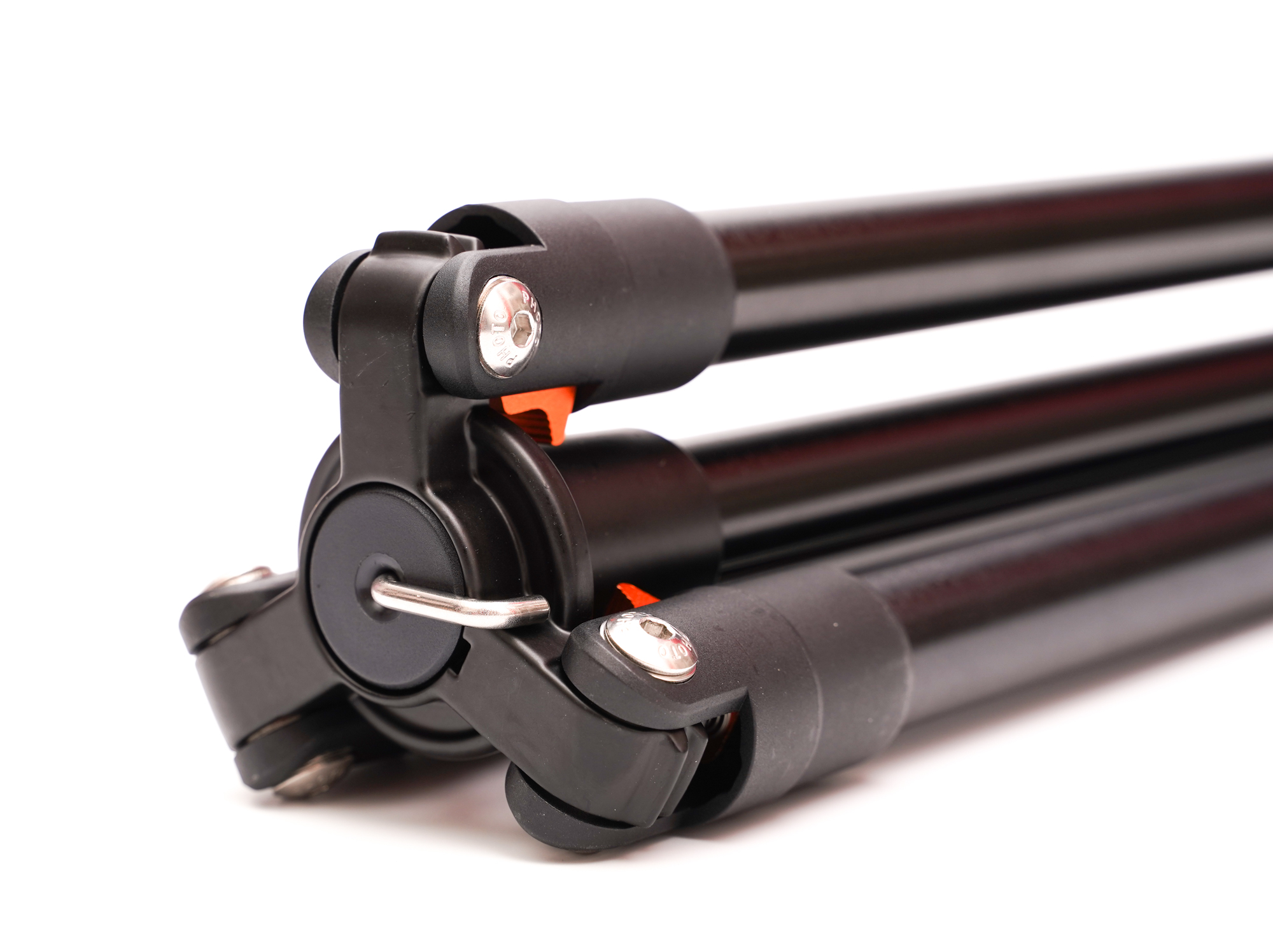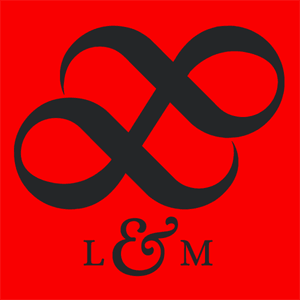Today I am reporting on my experience with the K&F CONCEPT Reversible Heavy Duty Light Stand (Canadian model name) that I have been testing for several weeks. In the American market, K&F drop the “Heavy Duty” from the stand name, despite the identical SKU and specs.
Light stands are a studio photographer’s best friend. They are necessary to position strobes properly and hold modifiers such as umbrellas or softboxes. Despite their usefulness, many photographers treat them like disposable goods. This isn’t surprising, as light stands work best when you don’t have to think about them. On the other hand, a cheap light stand is a threat for expensive lighting equipment, can take up too much space in a bag, be too heavy or cumbersome to assemble.
This is why I was curious to test the K&F CONCEPT Reversible Heavy Duty Light Stand. It has a few tricks up its sleeve to set it apart from more basic options.
Physical Description
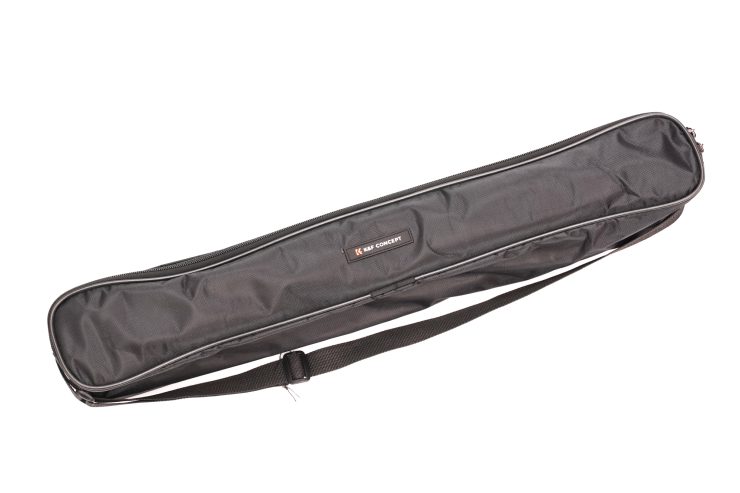
The K&F CONCEPT light stand ships in a nice soft case which looks like a tripod case. Two HEX keys are also included and store inside the case.
The light stand itself also looks somewhat like a tripod. The first element setting it apart from a typical light stand is that usually, the legs are linked to the center column via braces, a bit like an umbrella. On the other hand, the K&F CONCEPT light stand operates like many travel tripods, with the legs folding 180° upward for storage.
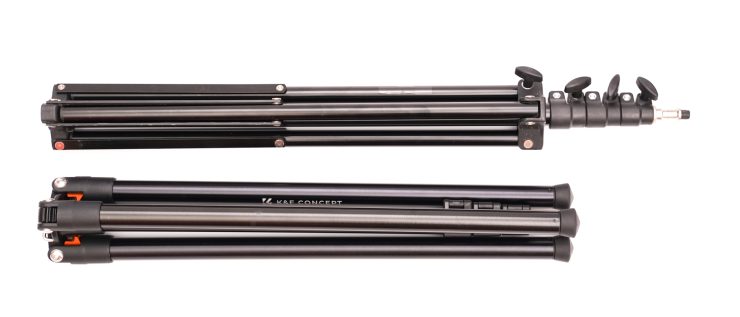
This leads to a smaller volume, as is obvious from the picture above comparing the K&F CONCEPT light stand to a rather generic Impact light stand. The Impact’s legs do not open as wide, it does not extend as high, but is still longer (albeit slightly slimmer) than the K&F CONCEPT. The latter is only 55cm (21.7 inches) long when folded. My Impact light stand is 7cm (30 inches) long, a significant difference.
Another benefit of the legs not bracing against the center column is that tightening the knob locking those braces often deform the shape of the main shaft, preventing the inner tubes from sliding properly.
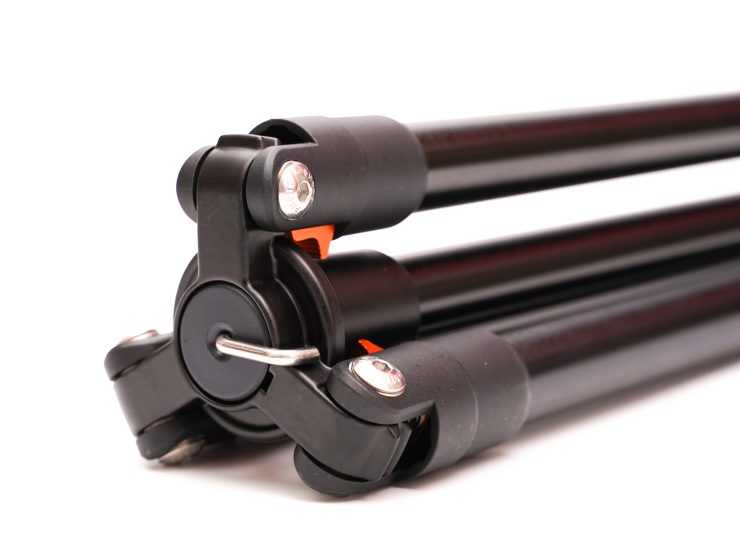
The bottom of the main shaft has a weight hook, just like a tripod. This will help to stabilize the light stand if used outside. Vibrations are not a big issue for light stands, but they tend to be top-heavy when carrying a modifier such as a softbox. Adding some weight makes the apparatus more stable.

The legs have rubber feet, again more like a tripod than a regular light stand.
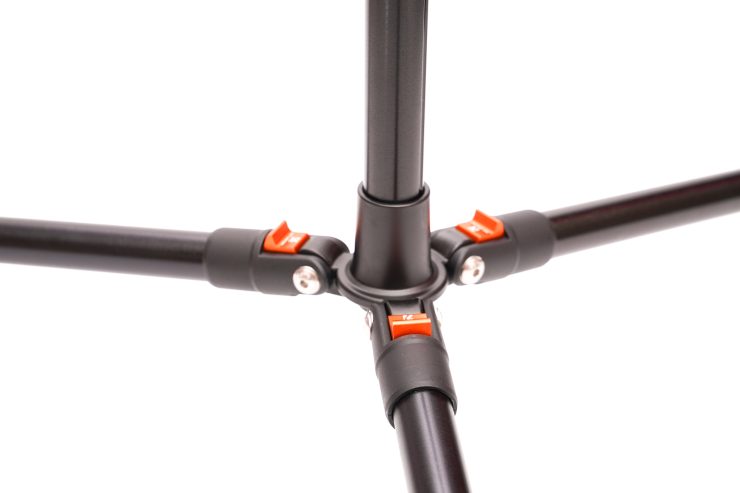
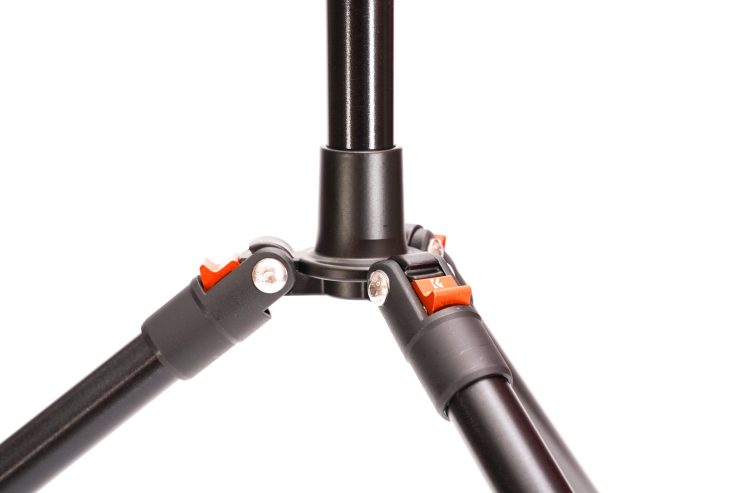
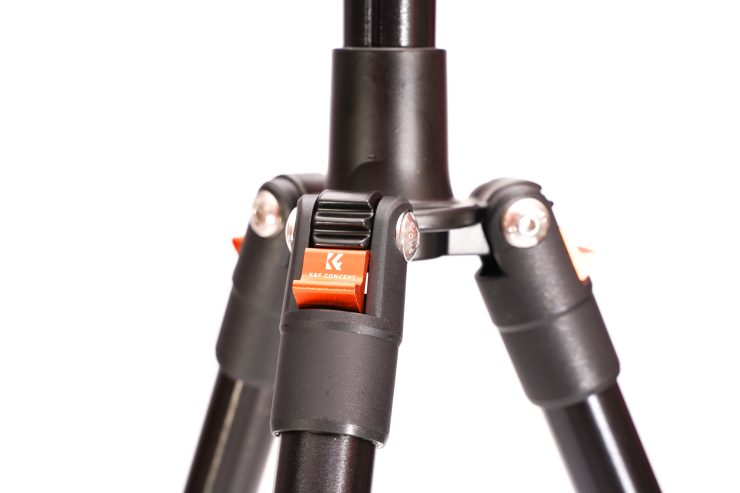
Again like a tripod, the legs can lock in three positions. The locks are spring-loaded and a bright orange so they are easy to spot. Better balance will be obtained by spreading the legs wide, but it’s possible to squeeze more height by setting up the legs more like a tripod. The light stand reaches a maximum height of 230cm (90.6 inches), more than typical light stands which reach about 200cm (except for C-stands which are a different type of stand entirely). When the legs are at their widest, the light stand balances better, with the legs extending wider, than my Impact light stand.
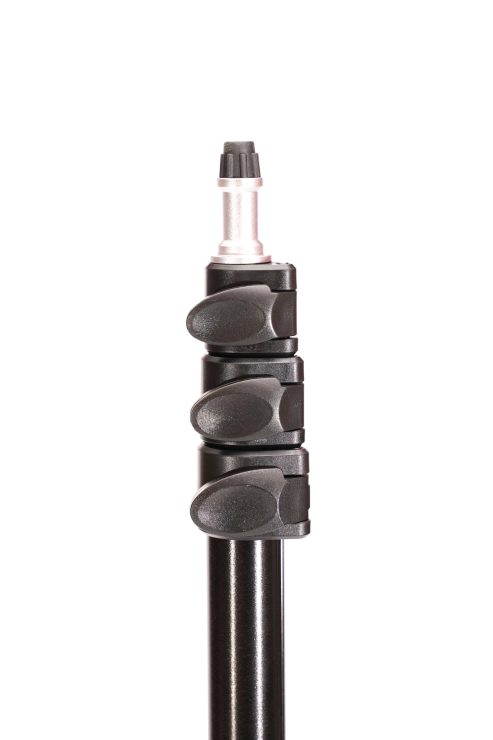
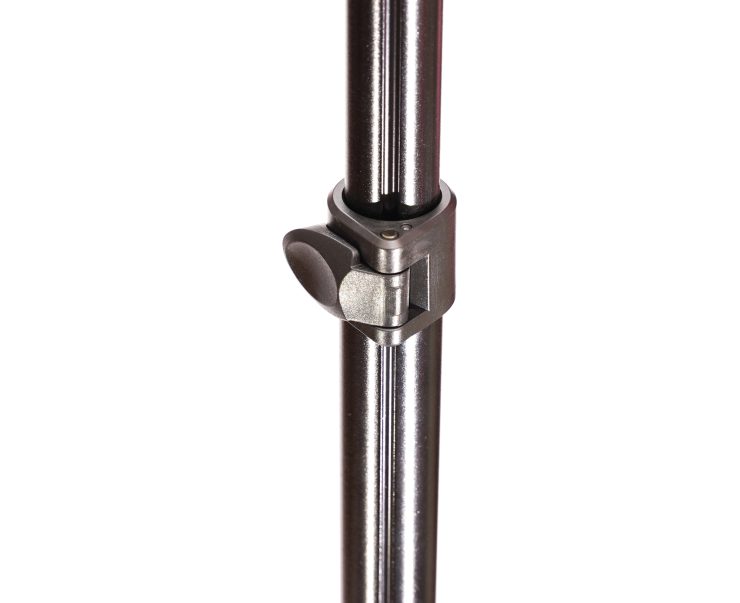
The main shaft is made of four sections. The shafts are grooved so they won’t pivot. They slide smoothly, more so than any other light stand I have used in the past. The main shaft has a diameter of 2.6cm (a little over an inch), thicker than what is common. The knobs locking each section operate well and can be tightened as needed with the HEX keys.
Given the design of the K&F CONCEPT light stand, the base (where the legs and shaft meet) will bear almost all of the torsion stress and weight. It’s a good thing that the company use a patented design with an alloy of magnesium and aluminum. It is both light and strong. Machining is precise with no loose parts.
The top is fairly typical, with a standard mount for most modifiers, and an ¼-20 thread is present underneath the plastic button.
In Use
There’s a lot to like with the K&F CONCEPT Reversible Heavy Duty Light Stand. The light stand is lightweight, at only 890g (1.9 pounds). Coupling this with its compact size when folded, it is small enough to carry it like a tripod, for example strapped to a backpack. It’s the first time I consider carrying a light stand this way.
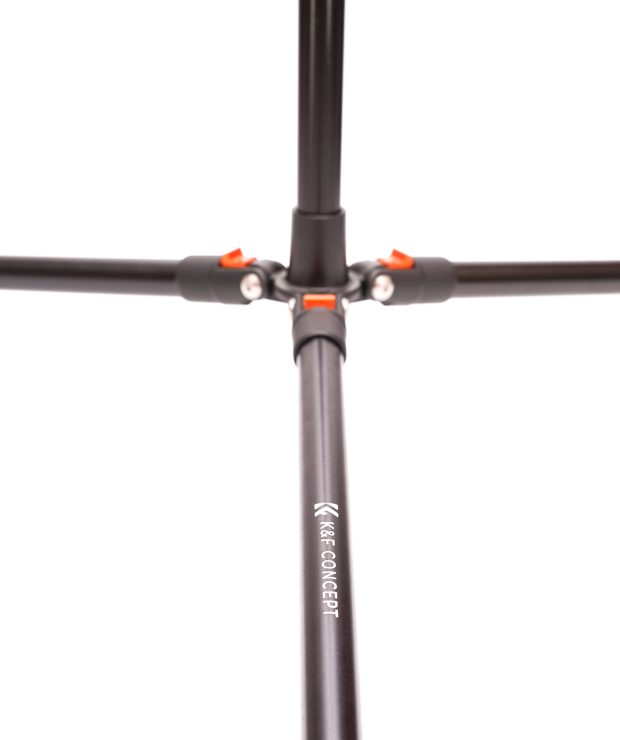
This light stand is neither faster not slower to set up than others I have use. It does, however, feel nicer thanks to the positive click of the legs and the smooth movement of the main shaft. In my time with it, I preferred to use the widest (and lowest) position for the legs instead of using a “tripod-like” configuration with a weight. I’m still glad the option exists. Thanks to the hook, it’s not necessary to bring a sandbag: hanging my camera bag would have been enough.
Light stands are often somewhat cheap. A lot of thought went into getting the K&F CONCEPT right. Small details, like the grooved shafts, wide legs and compact size, all add up to make a product which feels more premium than usual.
What the light stand lacks is a way to orient the mount horizontally. I’m not a big fan of this option as it’s too easy to topple the light stand, but it’s nice to have choices.
Other Options
There is no lack of options for light stands. Most are generic, and cheaper than the K&F CONCEPT Reversible Heavy Duty Light Stand which typically costs $79 (deals can often be found online).
SmallRig sell a standard tripod (with leg braces) reaching an impressive 280cm (110 inches) for $69. It does not fold as small, as can be expected (94cm / 37 inches). Neewer sell a $67 light stand which only reaches up to 220cm (86 inches). It des have the option to orient the mount horizontally, but is significantly heavier. Turning to brands with a fancier reputation, a Broncolor light stand reaching 249cm (98 inches) with a 90cm (36 inches) folded length. It weights 1200g (2.7 pounds) and costs $170.95. The K&F CONCEPT is thus in the same ballpark as its competitors, cheaper than many other brands, while offering a smaller folded size and excellent maximum height.
Summary
For many photographers, a light stand is only one step above a disposable item. That way of thinking is likely to lead to frustration and possibly accidents. As with anything else, it’s a good idea to evaluate needs carefully and get the best tool for the job.
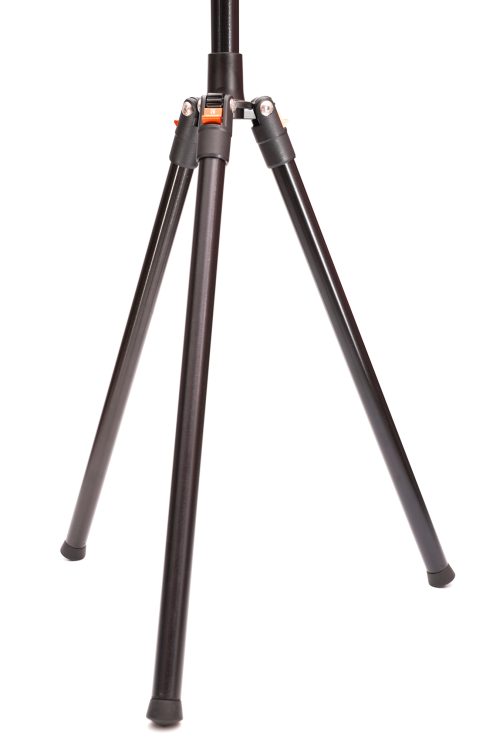
In this regard, the K&F CONCEPT Reversible Heavy Duty Light Stand has a lot to offer, particularly for photographers who often leave the studio. The light stand is shorter than most when folded, easy to carry like a tripod. It is stable, reaches a good height, and all its parts fit well together and operate smoothly. In fact, apart from a heavy-duty C-stand, this s the most stable light stand I have ever used.
